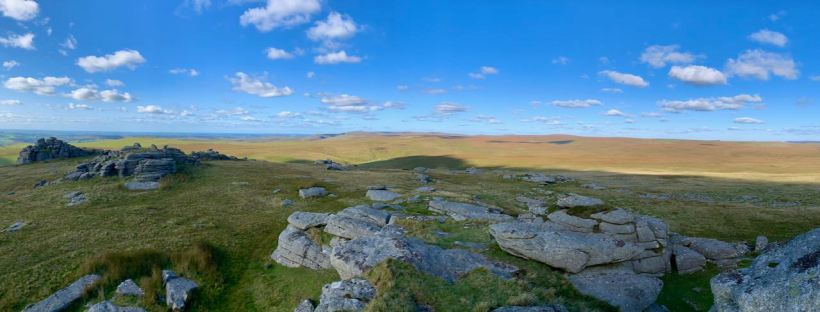On Sunday, 4 October, more than 200 people (at last count) will be starting out on foot for a shared adventure — the 2020 Climate Marathon. From our homes on six continents, in different climates and in different seasons, we are coming together to walk and run 26 miles each week throughout the month — all in support and celebration of the work of climate advocates, activists, teachers, leaders, and those who work tirelessly to bring meaningful change to our reliance on fossil fuels and to help build a more regenerative future for our global community.
The inspiration for our month-long journey together is COP26 — the UN Climate Change Conference scheduled to take place in Glasgow, Scotland, in November 2021. Since the first conference in 1995 in Germany, the UN Climate Change Conferences have led to significant cooperative climate agreements — the 1997 Kyoto Protocol and the 2015 Paris Agreement among them — and a continuing international dialogue is an essential cornerstone toward meaningful collaborative action.

The architects of the 2015 Paris Agreement, Christiana Figueres and Tom Rivett-Carnac (a Schumacher College alumnus), write in their empowering and forward-thinking book, The Future We Choose, that we are the designers of our own future in the face of this climate crisis, and whatever choice we make “determines what will become of us.”
They add:
Václav Havel aptly described optimism as ‘a state of mind, not a state of the world.’ Three characteristics are generally agreed upon as essential to making this mindset transformative: the intention to see beyond the immediate horizon, the comfort with uncertainty about the final outcome, and the commitment that is fostered by that mindset.
I really like these 3 traits — intention, comfort with uncertainty, and commitment — because they show the connection between setting out on a walk or run with making a choice to take action on climate change: you can’t see the finish, you’re not always sure where you’re going to end up, and only by committing to taking one step after another will you make progress.
[The Future We Choose would be a great book to read alongside your daily running/walking practice this month!]
As a runner, I’ve spent many years engaging in this just this kind of peripatetic activism — running hundreds of miles as part of the Climate Run project across landscapes in the northern climates like Iceland, Arctic Norway and Sweden, Svalbard, the Faroe Islands, Newfoundland, as well as across the US, UK and elsewhere.

Since 2014, all of my endurance runs have been a way to connect people to place through movement. Running has been my particular way of engaging with the world — by far my favourite way to experience place is by moving quickly along remote trails for days on end.
Even more important, though, have been the opportunities I’ve had to share my solo miles with audiences around the world through workshops, conferences, public talks, interviews, podcasts, and the written word.
I’ve been asked more than once — often after a slideshow I’ve given to middle and high school students — ‘what was your favourite part of the run?‘
My answer is invariably, ‘sharing it here with you today.’
Building community around our engagement with climate change and with the world we are all a part of — that’s the whole point!
Schumacher College founder Satish Kumar, who completed an 8,000 mile Peace Walk to all of the world’s nuclear capitols in the 1960s, said during a recent Earth Talk at Dartington Hall, that walking can itself be a form of activism, and that just taking that first step can be the start of something extraordinary.
With so many coming together this month to share in this event of moving through different landscapes — cities and suburbs, mountains and farmlands, gardens and wilderness — it only underscores that climate change is a universal challenge that we can best approach through collective action as our own individual steps resonate and multiply.

As we take our first steps on Sunday, I am inspired, too, by the poem Tots Els Mars / All of our Seas by the Catalan poet Rosa Font Massot: “Ser branca és ser totes les branques . . . traçar nous viaranys en cels inexplorats.” / “To be a branch is to be all branches . . . to draw new paths in unexplored skies.”
Here’s to drawing new paths together in unexplored skies.
Tots Els Mars
Rosa Font Massot, “Tots Els Mars”
Ser camp vol dir ser tots els camps
amb flors i blat o bé pomeres
i magraners a les vorades.
Ser mar vol dir ser tots els mars,
l’essència del blau a les cales serenes
i navegar per sempre sense rumb.
Ser branca és ser totes les branques,
les del bedoll i el freixe, la saula i el xiprer:
traçar nous viaranys en cels inexplorats.
Un llibre és tots els llibres:
la llum de l’univers, les lletres de milers
d’alfabets existents, perduts o bé increats.
Una veu és la veu de tots aquells que callen,
la veu dels oblidats, dels qui no tenen veu:
és la teva i la meva.
Un ésser viu és tots els éssers vius:
els ulls de l’un són tots els ulls,
les mans, totes les mans.
Vivim en cada veu, morim en cada cos.

Great post. Good luck to all runners and walkers.
Vic
LikeLike